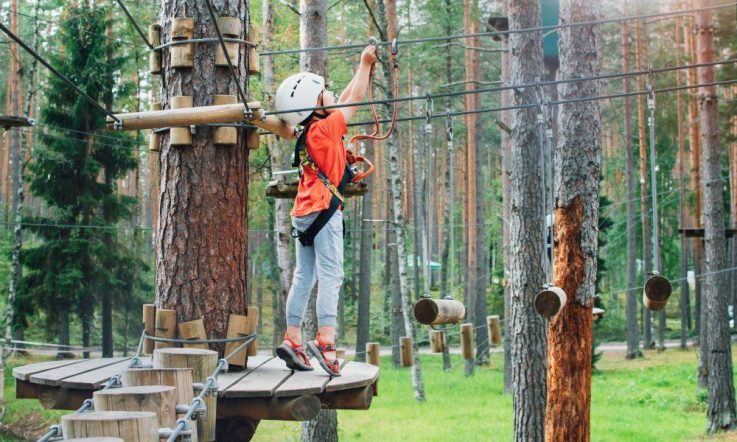Hello and thanks for listening to this Teacher Staffroom podcast from Teacher magazine, I’m Rebecca Vukovic.
Did you know that here at Teacher magazine we publish content in different formats? From short to long articles, reader submissions, columns from distinguished authors, podcasts, videos or infographics –we publish fresh content on our website 4 days a week. In today’s episode, I’m going to share some of the podcast highlights from this month on Teacher, including snippets from those recordings. I’ll also tell you a little more about the different formats, and point you to some of the other highlights from the month that you won’t want to miss. Of course, like all Teacher Staffroom episodes, I’ll be posing questions throughout, so feel free to pause the audio and consider how these ideas might be useful to your own practice. Okay, let’s jump in.
The first podcast highlight comes from a conversation between Dominique Russell and Ebony Melzak from Monash University. Ebony visited our offices here in Melbourne to discuss her research that uncovered specific factors that support early career teachers’ sense of belonging. As you’ll hear in the conversation, 4 main themes emerged: teacher collaboration, relationships with colleagues, supporting early career teachers through their early-career journey, and getting early career teachers involved in school decision making. In the episode, Dom and Ebony explore each theme in detail, what the research says, and how it might look in different school settings.
Here’s a short snippet from that episode. It’s Ebony talking about teacher collaboration and why it is so important for early career teachers.
Teacher collaboration essentially is important because it provides teachers with those structured opportunities within which they can form those connections and relationships with their peers. Doesn't actually really matter what the collaboration is – whether it's PD, observation, curriculum discussions or anything like that, but it's just important that the schools have them in their timetables so that early career teachers can come in and go, ‘OK, I'm working with the senior maths teacher, we're going to develop this resource or this assessment’, and it's that safe space to be able to ask those questions and form that connection with someone who, down the track, you could then utilise if you are having a difficult time or have some questions to ask. There's things called professional learning communities, and some schools might utilise that approach to make teacher collaboration a bit more structured, a bit more easy to implement, but it really doesn't matter. And that's sort of what the literature show, that there's so many different ways to do it, but it's just about being proactive about it.
I think some things that were interesting is that, when I was speaking to teachers, collaboration they knew was important, but the schools didn't support them to do so in terms of, like, time and pay. And so considering that it should be in their calendars, it shouldn't be something they try to squeeze in on their weekends or, you know, on their own time or after school, and be (I can't say this word very well, but) remunerated, I think, for it, is important. Collaboration should be something that the school supports.
After listening to the podcast in full, I encourage you to reflect on the 4 themes to emerge from this research. Again, they’re teacher collaboration, relationships with colleagues, supporting early career teachers through their early-career journey, and getting early career teachers involved in school decision making.
As a school, are you supporting early career teachers in these ways? What is one idea or activity mentioned by Ebony that you may want to implement in the future? Can you ask an early career teacher colleague for their view?
Another podcast episode I’d like to highlight was actually one I did with Professor Brianna Kennedy from the University of Glasgow for our School Improvement series. Brianna’s new book explores how to crack persistent teaching dilemmas in the classroom using a practical, 2-stage process, that we sat down to talk about it in great detail. Brianna offers some really practical insights and I think teachers will get a lot out of this episode. The highlight for me was the story she told of Ms Nash, a real teacher who was facing a challenging problem in her classroom. Here’s a short snippet of Brianna explaining Ms Nash’s problem and some of the questions they asked as researchers to help Ms Nash start to tackle it.
When we first started talking to Ms Nash about her dilemma and she was saying to us, ‘the students are unruly. They don't care about learning. They come in and they just, they're just dismissive, they just don't care about what they're doing’. And then we said, ‘OK, but what do you actually observe?’ So, in this habit of deliberate interpretation we separate out observation and interpretation and judgment and then the decision that you make. So we break that into 4 actual steps, which usually happen so fast – you receive information and then you react. But we break that into actually 4 different things.
And so we said to her, ‘OK, well, what do you actually observe?’ She says, ‘well, they come into class and they don't want to learn’. OK, but what do you actually see? What do you actually see? What do you actually hear? And then she started to say, ‘well, they come in and they're talking loudly, and they walk around the room, and they don't walk directly to a desk, but they walk around instead and then they finally sit down. And sometimes they don't have the notebook that they're supposed to have, and sometimes they do. And if they do, then they will look at the screen where the assignment is and they will then say “Miss, what am I supposed to do?” even though the directions are on the screen?’
OK, that is an observation – now we know exactly what the students did. And so if we then break that observation apart from the interpretation that ‘the students don't want to learn’ and the judgment that they don't care enough about education, we can actually start to think about what else might be going on in that situation. So we have this observation; this is what they're doing. But instead of interpreting that they don't want to learn, what else might we interpret from this set of facts? So now we can start to think about, ‘well, do they know where to sit? Is there a seating chart? Do they know where the jotters are? Are they always in the same place? Are they accessible? Are they having trouble finding theirs in the stack? When they sit down and they look at the screen, what's actually on the screen? Might they be legitimately confused, even though you think that the assignment is clear?’ And as we started to ask those kinds of questions and we really looked at the slides that were on the screen, Ms Nash had put so much information on the slides in different colours, with different pictures, using words the students didn't know that we can now start to think about curriculum and instruction as a dimension of classroom management. Rather than the students don't want to learn, the students can't actually access the learning.
I’d encourage you to listen to the episode in full to find out what happened to Ms Nash – it really is a great listen. After doing that, consider these questions.
How do you currently approach challenging problems in your classroom? On your own or with a group of colleagues, identify a persistent dilemma that you keep circling back to. Thinking about the 2-stage process outlined by Brianna Kennedy, how could this help you in approaching the challenge in a different way?
The other podcast I would love to tell you about is one Jo Earp recorded with Dr Fatemeh Aminpour, a Research Fellow at the City Futures Research Centre at the University of New South Wales. In this episode they are chatting about play spaces – specifically what works well for children in different situations and how schools can look at small incremental changes to make better use of the play spaces they’ve got.
I want to share a short clip from the episode now. It’s Fatemah talking about the importance of playgrounds and recreational spaces at school.
…playgrounds and recreational spaces are so much more than somewhere to burn off energy, they're actually a real powerful part of a child's learning environment. Yes, they support physical health, but they also shape social skills, confidence, emotional wellbeing – and many of these happen in the context of what we call ‘self-directed play’. You know, when children play on their own, they learn to solve problems, make decisions and basically explore the world around themselves. So, self-directed play is especially valuable when it allows them to discover things for themselves without the pressure or worrying about making mistakes or failing.
So, for many children these are the spaces where friendship forms; you know, where they learn how to negotiate share and collaborate. For others they are a refuge, a place to feel calm, regulate emotions, recharge before going back into the classroom – and that's especially important for children who might find the school day quite overwhelming. And as you pointed out, when playgrounds are designed with inclusivity in mind, they send a strong message, you know – you belong here. It creates a culture where difference is normal, and everyone has opportunities to participate and contribute. So, for educators, investing into these spaces is about supporting the whole child – their physical, social, emotional and cognitive development – and making sure that the learning that happens outside the classroom is just as intentional and important as the learning that happens inside.
After listening to the episode, here are some questions to think about:
Consider how the playground and recreational spaces at your school currently cater to different types of play – active, social, imaginative, and restorative – and whether all students feel equally welcome and safe. Where could improvements be made?
Dr Aminpour says there are often play spaces in underused parts of the school grounds. Thinking about spaces that are currently out of bounds or underused – what potential do they hold for quieter or more flexible play experiences? What are the barriers to bringing them into use and how could you overcome them?
Moving on from podcasts now, I mentioned earlier that Teacher publishes content in a range of different formats, which allows us to share evidence-based research and practice in ways that make it really accessible to our audience.
If you love infographics, make sure you check out the one we published this month on popular book genres for students. It shares the most popular fiction and non-fiction genres of ebooks borrowed by students in primary, secondary and upper secondary.
If you prefer short articles, I’d recommend you check out a research news piece we published on the changing landscape of school libraries. We share findings from a new census of school libraries in South Australia that provides a snapshot of their role and staffing, and highlights significant trends, progress and challenges over the last 5 years.
We’re lucky here at Teacher to have access to some really esteemed thought leaders in education who write for us. Professor Martin Westwell, Chief Executive of the South Australian Department for Education is one of those people. In his column this month, he explores how our influence as parents and teachers can shape our children’s dispositions towards learning, life, and school.
But if you’d prefer to read articles written by educators talking about their own experiences in a school setting, we regularly publish reader submissions from teachers and school leaders. This month, Georgie Facci, a year 6 teacher and Team Leader at Scotch College Junior School in Adelaide wrote about how the school is embedding AI into the teaching and learning across the curriculum, and how staff are building their confidence and capabilities to foster a culture of empowered experimentation. Make sure you check it out over at the teachermagazine.com website.
That’s all for today. Thanks for listening. I’ll leave the links to the full articles, infographics and podcast I mentioned today in the transcript of this podcast, which you can find under the podcast tab at our website teachermagazine.com. We’ll be back with a new episode very soon.



